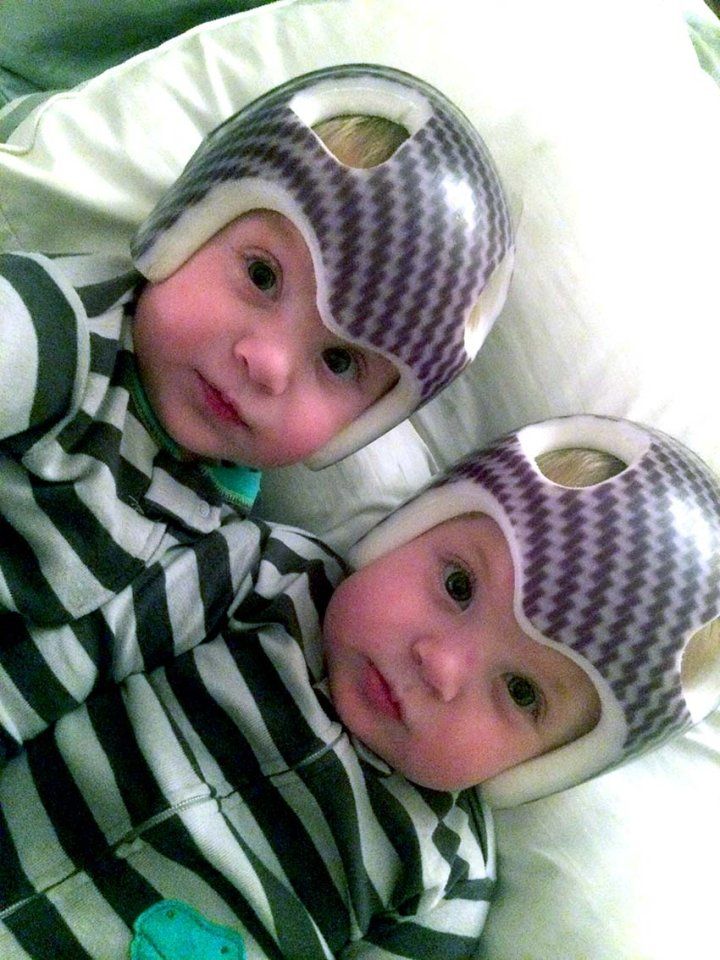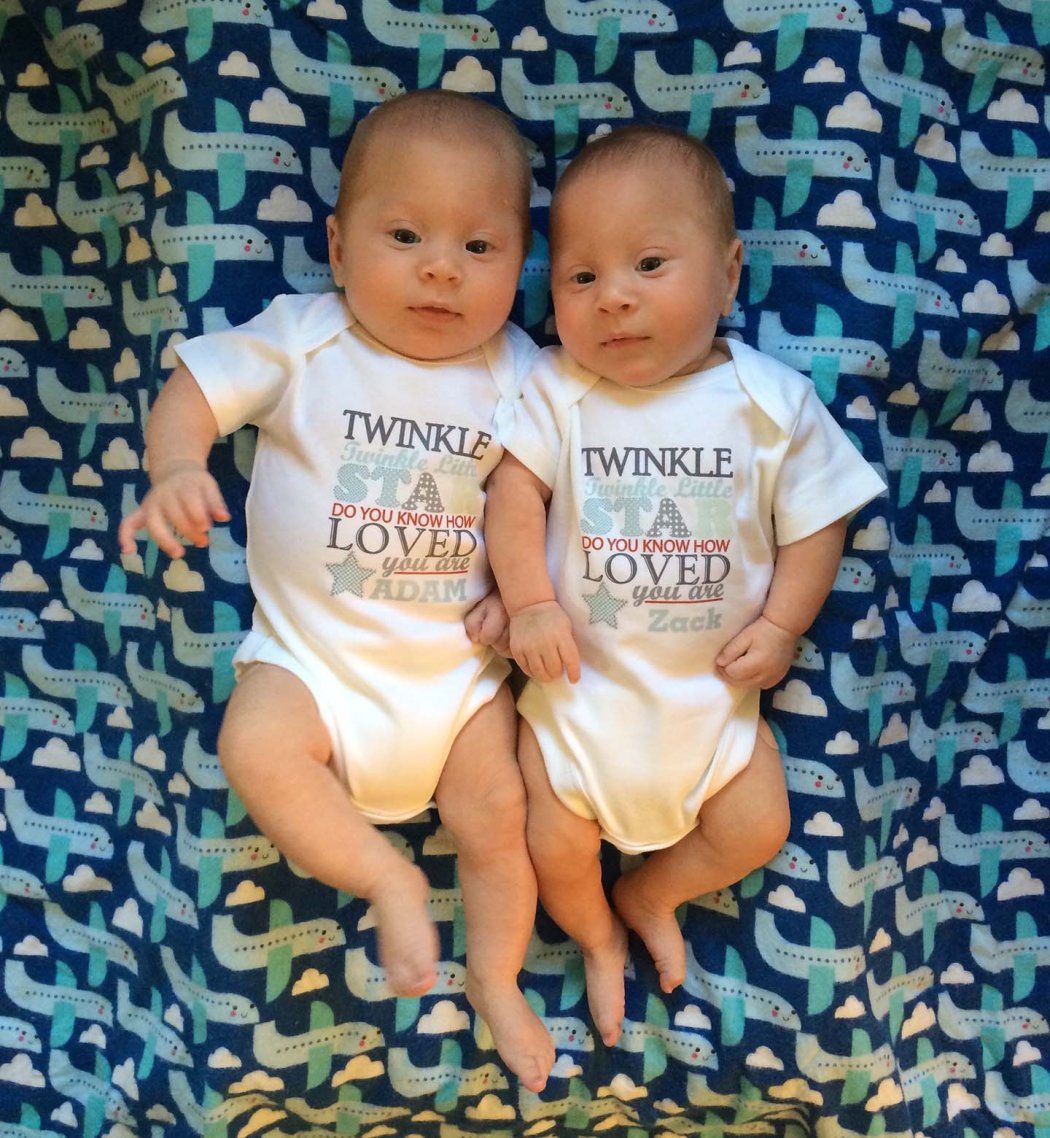Mitra Downes gazed worriedly at her identical twin boys, Zack and Adam, who were born premature, after a pregnancy marked by almost daily doctor’s visits.
A prominent ridge ran from the bridge of the boys’ noses to the hairlines on their foreheads. The crest drew the twin’s features inwards, pulling their eyes closer together. Viewed from above, their heads had an almost triangular shape.
Neonatal doctors at the East Bay hospital where the twins were born initially reassured her. “It wasn’t a huge priority because they had other health concerns,” Downes remembers. “It felt superficial to be concerned about how they looked.”
But as the twins got closer to being discharged, she and her husband pressed the doctors to find out what more they could do. They were referred to the craniofacial clinic at UCSF Benioff Children’s Hospital Oakland – one of the few hospitals nationwide offering families like theirs a one-stop shop for this specialized care.
A special scanning device carefully traces the contours of each baby’s head, allowing doctors to craft a unique helmet that exactly matches their needs.
Families flock to Oakland from across the state
When babies are born, their skull bones are soft and haven’t yet grown together. This allows their heads to accommodate fast-growing brains. In about 1 in 3,000 U.S. babies, their skull bones fuse together too early causing their heads to become misshapen or too small, a condition called craniosynostosis, according to Peter Sun, MD, UCSF professor and pediatric neurosurgeon.
At about three months old, Downes’ twins were diagnosed with a rare form of the condition called metopic craniosynostosis.

UCSF Benioff Oakland’s craniofacial clinic treats more than 400 children each year for head shape conditions with helmet therapy. Most infants come to the clinic for positional plagiocephaly – or the flattening of one side of the head due to spending too much time laying in one position. For some kids, explains the clinic’s physician assistant Megan Bailey, PA-C, MHS, this can be due to tight neck muscles or simply a baby’s preference.
For children with these conditions, medical helmets – periodically adjusted by doctors and trained professionals – can help round their heads as the brain and skull grow. Many children with craniosynostosis need to undergo neurosurgery in addition to helmet therapy.
Bobby Smith, CO, is an orthotist for Pacific Medical, Inc, a firm that UCSF Benioff Oakland contracts to measure and adjust helmets on-site, making it one of the only hospitals nationally to offer these services alongside neurosurgery.
“Helmets don’t squeeze the babies’ heads to change the shape,” Smith explains. “Instead, we focus the head’s future growth to improve head shape. If there is a bump or high spot on a child’s head, we’ll use the helmets to hold that steady but leave spaces in the helmet to allow other areas of the skull to catch up to those high spots.”
‘Their focus was on what we needed as a family’
Once at UCSF Benioff Oakland’s craniofacial clinic, Zack and Adam were seen by Sun, who confirmed the pair would need surgery. Downes was terrified: “If anybody tells you they’re going to operate on the head of an eight-pound baby, it’s scary.”
Her thoughts then turned to the practicalities of major surgery with twins. “I didn’t want to go through the process and then have to put the next baby through it,” Downes says. “I asked if we could do both the boys’ surgeries on the same day. It seems so minor, but to a parent of twins, that was so important to me.”
The clinic staff had never done back-to-back metopic craniosynostosis surgeries before and wondered if they could turn around the operating room and equipment that fast, she remembers. “Dr. Sun just said, ‘We’re going to make it work’ – and they did. Their focus was on what we needed as a family.”
Downes’ apprehensions about the surgery were much worse than the reality. “The boys looked so much better right after surgery – it was amazing,” she says. “The recovery was much easier than I thought, and their pain wasn’t too bad and really well managed.”
Rare partnerships give patients access to world-class, convenient care
Once Zack and Adam had recovered at home, they returned to Oakland for the next stage of treatment: helmet therapy. Smith and the center’s surgeons worked closely to measure the infants’ skulls and adjust the helmets over time, shaving the foam interiors to gently guide and shape their heads.
Not every craniofacial center has a dedicated Smith to boast of. “We’re one of the only centers that has an orthotist on-site, so our physicians can work directly with them to dictate the changes to helmets and see the babies in the helmets to ensure they get the best possible fit and results,” explains the clinic’s Melessa Hirschhorn, RN. “Because of this, our surgeons have a bit more control over how the helmet fits, and families don’t have to travel to a second location to see the orthotist.”
... Our surgeons have a bit more control over how the helmet fits, and families don’t have to travel to a second location to see the orthotist.”
Smith has nearly two decades of experience in sculpting medical helmets to surgeons’ orders – and getting wiggling babies to sit still: “Sometimes, it’s waving my name badge, sometimes it’s a light-up fidget spinner.”
Today, almost nine years after their diagnosis Zack and Adam are active, happy and healthy boys who excel on the soccer pitch as much as they do in the classroom. They see Sun, whom they’ve dubbed “the head doctor,” about once every two years for checkups.
“Dr. Sun is just a gentle, kind and warm person, and he’s still like that today,” Downes says.
And that’s true, she says, of all the clinic staff. “When we moved to the Bay Area, we felt really grateful because there weren’t specialists like this where we came from. We were so lucky to cross paths with Dr. Sun,” she says, beginning to laugh. “With luck like that, I joked I should have bought a lottery ticket.”
